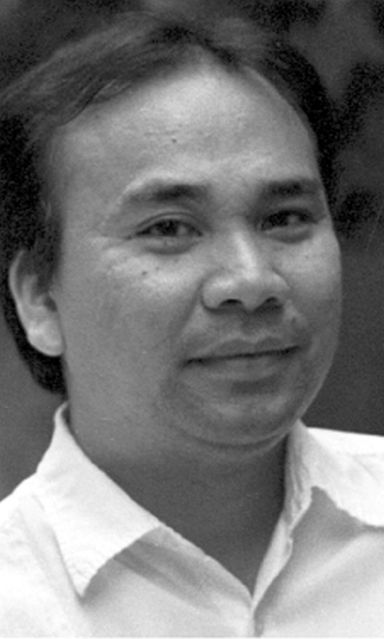
BERSALES
Because I have to present a paper at long-scheduled ceramics conference in Quy Nhon, Vietnam, I am deeply saddened that I cannot attend the requiem Mass and interment of His Eminence Ricardo Cardinal Vidal today.
Instead, let me use this space to count the many accomplishments of His Eminence in matters of cultural heritage, a legacy that has been continued, of course, by Archbishop Jose S. Palma.
At the top of the list is without doubt the establishment of the Archdiocesan Commission for the Cultural Heritage of the Church (ACCHC) and with it, the Archdiocesan Museum of Cebu, formerly known as the Cathedral Museum of Cebu. I believe not all dioceses and archdioceses actually have a functioning commission that takes care of the cultural patrimony of the church, following the Pontifical Commission for the Cultural Heritage of the Church established by Pope John Paul II way back in 1993.
The Archdiocesan Museum itself derives from an earlier one established by the late Msgr. Virgilio Yap upon his appointment made by the cardinal to set up one in time for the 400th anniversary of the establishment of the then-Diocese of Cebu in 1995. At that time, only sections of the lower floor of the late-Spanish period Cebu Cathedral rectory or convent occupied the celebratory exhibition spaces.
In 2001, Cardinal Vidal organized a fund-raising program to begin restoring the rectory and convert all its spaces into the museum that you see today. It took five years of fund raising and restoration, led by heritage architect Melva Rodriguez-Java, who, as fate would have it, approached me to set up the museum exhibition, complete with a museum storyline and exhibition brief.
As a member of both the ACCHC (since 2008) and of the curatorial board of the ACM (since its establishment in 2006), I have seen the late cardinal up close as he worked to ensure that heritage churches were protected as mandated by the Vatican’s own commission.
I also saw how oftentimes he felt sad whenever some of his brother priests committed violations of a circular letter he issued sometime in the 1990s reiterating the contents of “Opera Artis,” the major document issued by the Vatican way back in 1971 on the care of the Roman Catholic Church’s historical and artistic heritage.
The cardinal’s first challenge in the work of heritage actually happened in the 1980s when he had hardly warmed the seat of the Archdiocese as its archbishop. This was the padlocking of the Boljoon Church by residents and local government officials of Boljoon, led by the late Dr. Rene Amper, who got fed up with the incessant losses of the treasures of the former Augustinian church.
Dr. Amper and his councilors, if I recall correctly, were imprisoned at the municipal hall for doing this. The cardinal quickly traveled to Boljoon and quietly interceded and had the erring priest investigated and then transferred. By 1999, things had turned for the better for Boljoon Church as it was declared a National Historical Landmark by the National Historical Institute and in 2001, a National Cultural Treasure, the only one so far in Cebu, by the National Museum.
From time to time, the cardinal would include in the regular recollections of his brother priests a discussion by the ACCHC on the need to protest the treasures in their custody. This was when the ACCHC was still led by Msgr. Carlito Pono and continues under Archbishop Palma with the ACCHC now headed by Fr. Brian Brigoli.
Even as the cardinal also never tired to support the fund-raising programs, we made to sustain the museum and the work of the commission. One of the most memorable was when I broached the idea of a book of the churches of the archdiocese, which was approved by the ACCHC and proceeded with a splendid pre-selling of the book led by ACCHC head Msgr.
Pono together with members Louella Eslao-Alix, Marilou Chiogbian and Mary Frances Despi, among others. Another one was when he joined us for the unveiling of old defunct bronze bells, which were used for naming rights, now hanging at a convenient spot in the back garden of the museum.
(Among the cardinal’s legacies forwarded by Archbishop Palma, via the parish priest of the Metropolitan Cathedral Msgr. Rueb C. Labajo, is the financial support given to the museum to maintain its security requirements. Also, Archbishop Palma has provided funding for the operations of the commission as it moves about all over the towns where heritage churches are located — made more pressing following the October 15, 2013 earthquake and the restoration works that followed.)
When in Cebu for a religious event at the Metropolitan Cathedral, like today’s requiem Mass for our dearly beloved Cardinal, bishops and archbishops from all over the country, due to their sheer number, spend their time at the Archdiocesan Museum of Cebu where they prepare and don their liturgical vests and then procession to the cathedral.
Those who are there for the first time are always heard to utter a surprise that an entire rectory or convent has been given over to the museum. “Wow! You are so lucky!” we would be often told. “A whole building, with back garden to boot!”
And that is just but one of the legacies of our dearly beloved Ricardo Cardinal Vidal, who will be laid to rest today, that we will forever remember and cherish.
Disclaimer: The comments uploaded on this site do not necessarily represent or reflect the views of management and owner of Cebudailynews. We reserve the right to exclude comments that we deem to be inconsistent with our editorial standards.




